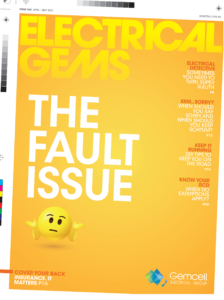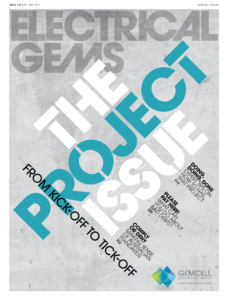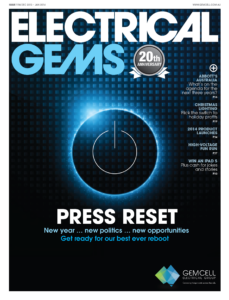Protect your profit margin: managing client expectations and eliminating scope creep
Scope creep – the silent eroder of profit.
On-site, it often sounds harmless: “Can you just add one more power point while you’re here?” But for an electrical business, that “one more” can quickly chip away at your profit margin and knock your schedule off track.
Scope creep is any unauthorised, unquoted work that expands the original job without increasing budget or time. What at first seems innocent can lead to disrupted scheduling, drained resources, and the potential to turn a well-planned project into a liability.
When it comes to scope creep, the key to maintaining profit isn’t about saying “no”, it’s setting clear, professional boundaries from the start so your business can deliver what was agreed and charge correctly for anything else.
In this article, we explore how to manage client expectations, prevent scope creep, and keep your projects running smoothly, without compromising professionalism or profit.
Getting your documentation right
Your quote isn’t just a friendly number on a piece of paper, it protects your time, effort and profit, setting the foundation for a professional working relationship. A well-written quote makes expectations clear from the start and acts as your first line of defence against misunderstandings down the track.
The quote as a contract
Your quote should act as a contract, setting clear expectations for what’s included in the job. Make sure it details:
- The exact number and placement of outlets, fittings, or fixtures
- The brand and model of all materials
- Specific cable runs or technical requirements
- Any relevant site conditions or access notes
When every element is documented, clients know exactly what they’re getting, and it gives you something concrete to refer back to if additional requests come up while on the job.
Explicit exclusions
Equally important are the things not included in the quote. Spell these out clearly in a dedicated ‘Exclusions’ section. Common examples include:
- Plaster patching or painting after electrical work
- Removal or disposal of existing fittings
- Non-electrical labour or work requiring other trades
Remember: If it’s not listed, it’s not included. This single line can save hours of unpaid extras and awkward conversations later.
The mandatory change-order clause
Even with a detailed quote, jobs can evolve once you’re on-site. That’s where a change-order process is essential. Every client-requested variation should have:
- A written change order (mini-quote) that outlines extra time, materials, and cost.
- Plus written acceptance, via signature or email, before any extra work begins.
This small step protects your margin, keeps the project transparent, and maintains trust with your client.
Sean M Clancy, Managing Director at the award-winning SEO Gold Coast, recommends a one-page scope sheet before any tools hit the walls. “In my experience, scope creep declines when expectations shift from discussion to deliverables.”
Mastering proactive communication
Good, clear communication is what keeps small issues from becoming costly problems. Setting expectations early helps clients understand the process and builds trust before work even begins.
- The initial consultation: before beginning, talk openly about what might come up – things like old wiring, damaged walls, or access issues that could affect time and cost. Setting this expectation early keeps clients informed and minimises frustration if requests change later.
- The mid-job checkpoint: When a client asks for additional tasks to be done, pause the work and use the time to think about what that looks like – don’t keep going on a verbal “okay”. Take a moment to write up a change order, outlining what’s changing, how long it’ll take, and what it will cost, and wait for written approval before proceeding. This keeps everything transparent and avoids awkward payment disputes later.
- Professional language: Use professional, firm language, such as: “I would be happy to do that, but because it is outside the scope of work we agreed upon, I will need to provide a formal quote for the variation”.
“Your quote should feature model numbers, site photos, access notes, and even a short warranty statement,” Sean says. “Clients report a 35 per cent reduction in dispute rates when every promise is written down and backed by images.”
Reframing variations as structured upsells
Variations don’t always have to be a headache. In fact, they can be a smart sales opportunity when handled well.
The premium offer: When a client requests additional work, it’s good practice to present the formal change order alongside an option for a premium upgrade. For example, higher-end fittings, smart home integrations, or energy-efficient switchgears. It shows expertise, and positions you as a trusted professional offering tailored solutions.
Supplier linkage: When a variation turns into an upsell opportunity, it’s your chance to show clients the value of working with a professional. Recommend quality products from reliable, compliant sources, such as your local Gemcell supplier network, justify the additional cost and help reinforce your reputation for doing the job right. By linking variations to trusted suppliers, you’re not only protecting your client’s investment, you’re strengthening your own credibility as well.
Professionalism protects profit
Effective scope management is about being professional and transparent while managing client relationships and protecting your profit. When expectations are clear, documentation is solid, and variations are handled properly, every job stays fair and profitable.
Clear processes protect your time, your team, and your bottom line. By combining open communication with disciplined procedures, you make sure every hour is accounted for, every extra is approved, and every client walks away happy.
Find Your Local Member Branch
Ready to help your clients save on power with the very latest, energy efficient products? Visit your nearest
Gemcell member branch to explore the very best product available today.















































































